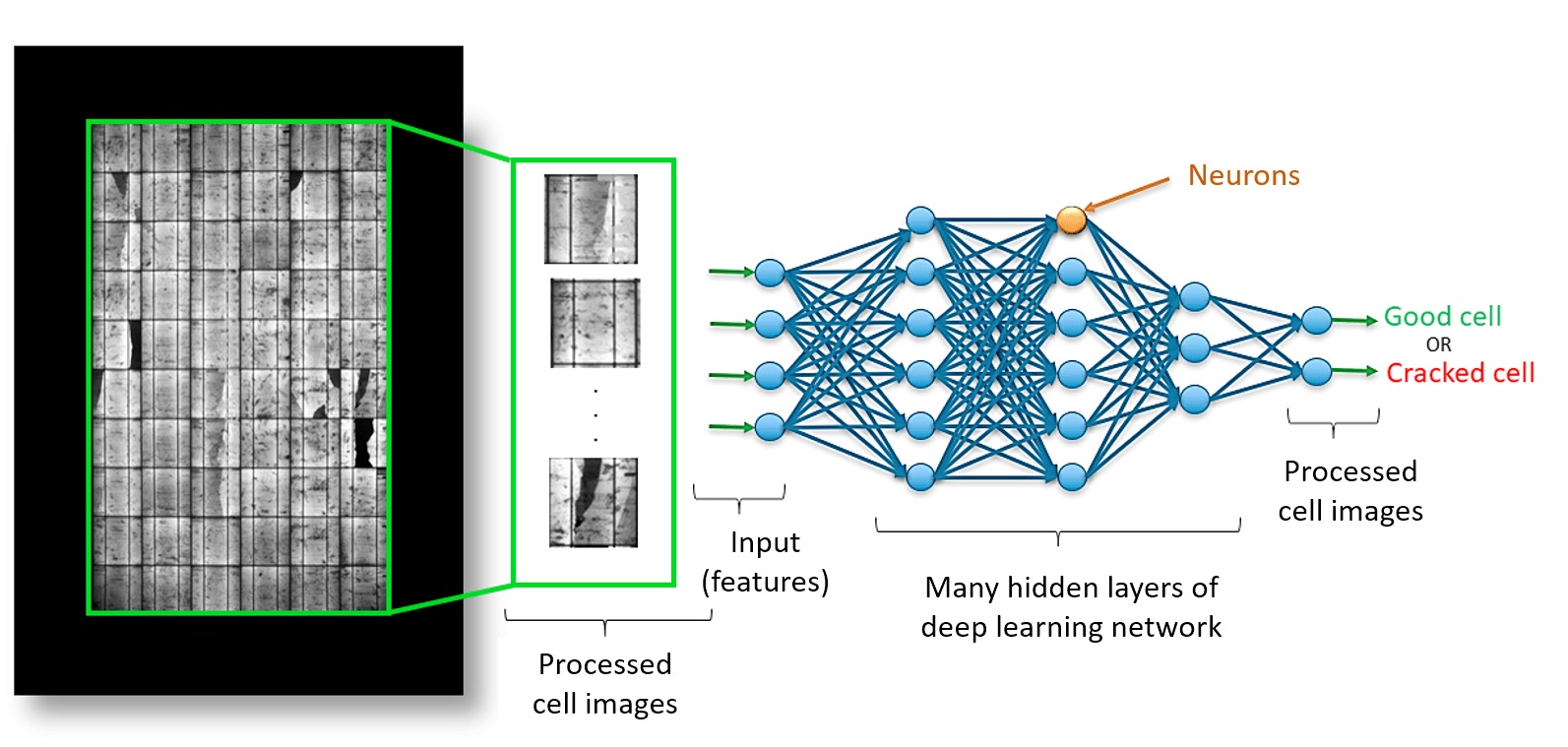


Does anyone accept the solar module with cracked cells? No! The cracks on the solar cells may cause a gradual reduction in power output. These cracks are usually invisible to the naked eye.
Here Electroluminescence (EL) imaging comes to the rescue, where one can see the cracks present in the cells. Unfortunately, the problem doesn't end here. An expert eye is required to detect and report these cracks in the cells. In addition to that, as the solar modules are produced and installed in bulk, the manual observation of such a large number of EL images is a tedious and time-consuming process. Due to the wide variety of visual features in EL images, reporting the presence of cracks may include human bias as well. So why not automate this process!

Advanced Image Processing and Artificial Intelligence (AI) techniques are becoming
popular as a solution
to such problems. Manual observation of cracks in EL images requires a person to be
trained with a variety
of EL images having different kinds of cracked and non-cracked features on the
cells. Similarly, here in
NCPRE, we have developed a deep learning model that is trained with large amounts of
EL image data
consisting of different features of cracked and non-cracked cells for automated
classification of cells. The
EL images were collected from installed PV plants from different climatic zones of
India during the 'All
India Survey 2018'. Unlike most of the published works in this area that have used
the lab simulated data
with artificially generated cracks, our data consists of the images of the fielded
PV modules having cracks
mainly due to environmental causes, poor installation practices, and transportation.
Also, the camera
used for capturing EL images was developed by NCPRE at a relatively low cost and is
robust for field
applications.
For cell wise analysis of EL images, it is important to crop out the background of
the PV module and
separate each individual cell. Various image processing algorithms were implemented
in a sequence to
prepare our cell EL images from the module EL images. The cracked and non-cracked
cells were manually
labeled, just like a textbook is prepared for our model to read and get 'trained'
for the 'test'! ResNet50 is
the deep network architecture used for the training. The parameters of the model are
tuned in such a
way that it will learn better to classify the cells with higher accuracy. The
trained model is now prepared
for the test on the image data which is not part of the training data set. The
accuracy of the model in the
test was found to be 98.6%! Similar experiments are performed with EL images from
another source to
study the performance of models on a cross dataset and it is found that active
learning of models over
new labeled data is the way towards a generic classification model.



